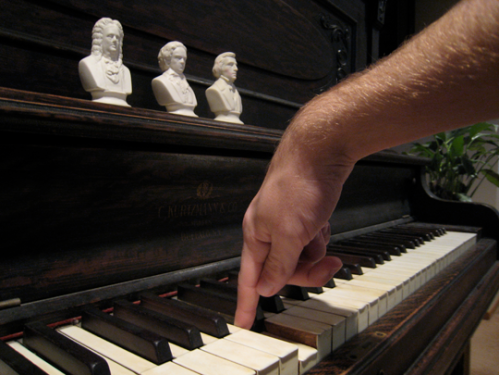When you strike a key on the piano, how many tones are you playing?
If you said one, you’re right…and wrong. Common sense tells us that one piano key produces one tone. In reality, each key has a bit more magic than that.

Let’s say you play a middle C on the piano. The main sound we hear is obviously the note we call “middle C.” But when this single key is struck, it also unleashes a surge of other tones, seemingly out of thin air. Due to the natural resonances of the piano string, different, higher pitches than middle C are produced: G, E, B-flat, D…the list continues up into the musical stratosphere.
These higher pitches are the overtones that tag along with every key struck on a piano, every breath blown into a saxophone, every violin pluck, every vocal “oooo,” and every gong crash. But we don’t normally hear these overtones, because:
- Overtones are generally much quieter than their fundamental tone (middle C in our example), except in rare instances. Kongar-ol Ondar’s singing is unique, because he can manipulate his voice’s overtones so that they’re louder than the fundamental, droning bass tone.
- Overtones and their fundamental tone arrive at our ear almost simultaneously. Since our brains tend to group sounds in order to make sense of the world, we hear all of these different tones as one note. This illusion explains why we heard 20+ unique sounds as one in Werzowa’s Intel audio logo.
So if we don’t usually hear these individual overtones, why study them? Continue reading…
Charlie McCarron
Sound Consultant
soundlounge
Leave a comment